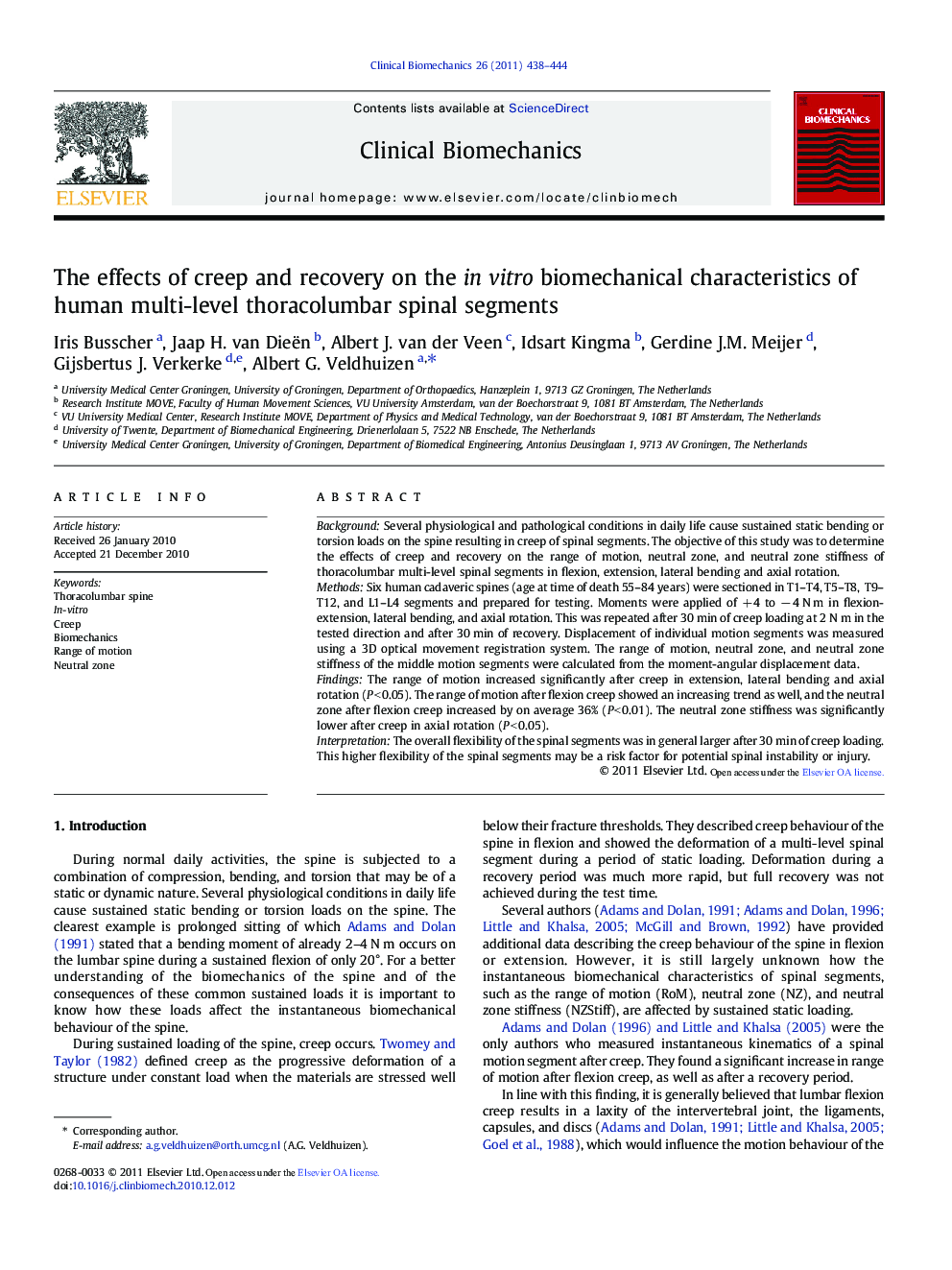| Article ID | Journal | Published Year | Pages | File Type |
|---|---|---|---|---|
| 6205078 | Clinical Biomechanics | 2011 | 7 Pages |
BackgroundSeveral physiological and pathological conditions in daily life cause sustained static bending or torsion loads on the spine resulting in creep of spinal segments. The objective of this study was to determine the effects of creep and recovery on the range of motion, neutral zone, and neutral zone stiffness of thoracolumbar multi-level spinal segments in flexion, extension, lateral bending and axial rotation.MethodsSix human cadaveric spines (age at time of death 55-84 years) were sectioned in T1-T4, T5-T8, T9-T12, and L1-L4 segments and prepared for testing. Moments were applied of + 4 to â 4 N m in flexion-extension, lateral bending, and axial rotation. This was repeated after 30 min of creep loading at 2 N m in the tested direction and after 30 min of recovery. Displacement of individual motion segments was measured using a 3D optical movement registration system. The range of motion, neutral zone, and neutral zone stiffness of the middle motion segments were calculated from the moment-angular displacement data.FindingsThe range of motion increased significantly after creep in extension, lateral bending and axial rotation (P < 0.05). The range of motion after flexion creep showed an increasing trend as well, and the neutral zone after flexion creep increased by on average 36% (P < 0.01). The neutral zone stiffness was significantly lower after creep in axial rotation (P < 0.05).InterpretationThe overall flexibility of the spinal segments was in general larger after 30 min of creep loading. This higher flexibility of the spinal segments may be a risk factor for potential spinal instability or injury.
